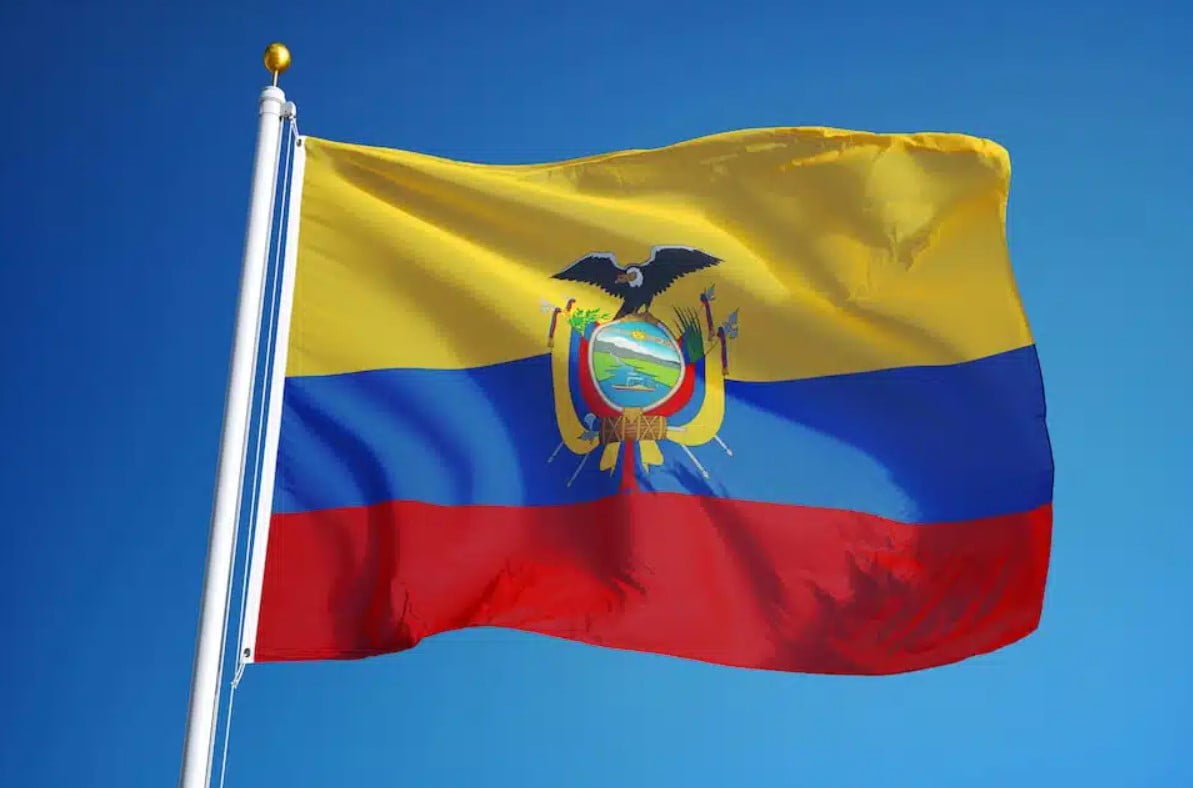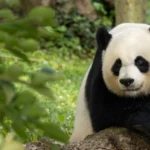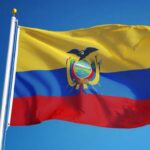Ecuador, officially the Republic of Ecuador, is located in northwestern South America, bordered by Colombia, Peru, and the Pacific Ocean. Its capital is Quito, and the largest city is Guayaquil. Furthermore, The country includes the Galápagos Islands, about 1,000 kilometers west of the mainland. Also, Ecuador’s history features a blend of indigenous cultures, Inca Empire influence, and Spanish colonization. Moreover, It gained independence in 1820 and became a sovereign state in 1830.
Ecuador is renowned for its environmental diversity, with ecosystems ranging from the Amazon rainforest to the Andean highlands and the Galápagos Islands. Accordingly, It has made significant contributions to environmental science, with research by figures like Alexander von Humboldt and Charles Darwin. Spanish is the official language.

However, The United States established diplomatic relations with Ecuador in 1848. Moreover, They cooperate on economic development, governance, security, and education. Also, U.S. assistance focuses on law and civil society, transparency, citizen security, countering trafficking, combating gender-based violence, and promoting biodiversity conservation.
Ecuador’s economy relies on agriculture, fisheries, and extractive industries. Furthermore, The country has faced challenges such as an energy crisis and increased gang violence. Despite high crime rates, Ecuador remains a popular tourist destination due to its natural beauty, including the Amazon rainforest, diverse wildlife, and cultural heritage. However, environmental issues, particularly due to oil exploration, pose significant challenges.
29 Facts About Ecuador
1. Ecuador’s National Tree and Its Contribution to Medicine
The cinchona tree, Ecuador’s national tree, is famous for producing quinine, the first medicine used to prevent and treat malaria.
2. Unique Border Geography
Ecuador, along with Chile, is one of the only two South American nations that do not share a border with Brazil.
3. Currency Change to the US Dollar
Since 2000, the US dollar has been Ecuador’s official currency, replacing the sucre after it faced severe inflation.
4. Pioneering Environmental Rights
In 2008, Ecuador became the first country to legally recognize the rights of nature, granting it the constitutional right to exist, persist, maintain, and regenerate.
5. Biodiversity Hotspot
Ecuador is home to a vast array of biodiversity, with 10% of the world’s plant species, 8% of its animal species, and 18% of its bird species, including nearly 3,800 vertebrate species.
6. Megadiverse Nation
Classified as one of the 17 megadiverse countries, Ecuador boasts the highest biodiversity per square kilometer globally.
7. Unique Volcanic Monitoring
Carlos Sánchez, Ecuador’s renowned ‘volcano-watcher,’ monitors the active Tungurahua volcano from a treehouse.
8. Popular Tourist Attraction
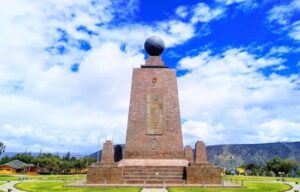
Sánchez’s treehouse also features a swing that attracts numerous visitors daily, offering a thrilling experience with a view of the volcano.
9. Historical Formation
Ecuador emerged in 1830 from the dissolution of Gran Colombia, which previously included territories of modern-day Colombia, Venezuela, Ecuador, Panama, and parts of Peru, Guyana, and Brazil.
10. Named After the Equator
Ecuador is uniquely named after the equator, with its official name, República del Ecuador, translating to ‘The Republic of the Equator.’
11. Symbolic Flag
Ecuador’s flag, featuring yellow, blue, and red stripes with the national coat of arms, symbolizes the nation’s wealth, natural beauty, and historical struggles.
12. Distinctive Coat of Arms
To differentiate from Colombia’s flag, Ecuador’s flag includes a coat of arms with a condor, shield, and various symbolic elements representing the nation’s heritage.
13. First UNESCO World Heritage Sites
Ecuador boasts the first and second UNESCO World Heritage Sites: the Galápagos Islands and the city of Quito.
14. Misplaced Equatorial Line
Ciudad Mitad del Mundo, a popular tourist site near Quito, marks the equator, though modern measurements place the true equatorial line 240 meters north of the monument.
15. Highest Official Capital
Quito, situated at 2,850 meters above sea level, is the highest official capital city in the world, surpassing La Paz in Bolivia, which is only the seat of government.
16. Darwin’s Evolutionary Discoveries
Charles Darwin’s 1835 visit to the Galápagos Islands significantly influenced his theory of evolution.
17. Culinary Delicacy

In Ecuador, guinea pig (known as ‘cuy’) is a traditional delicacy with deep cultural roots.
18. Leading Banana Exporter
Ecuador is the world’s largest exporter of bananas, contributing nearly 27% of global banana exports in 2021.
19. Top Expat Destination
Ecuador was voted the best country for expatriates in 2014 and 2015 and continues to rank highly for its quality of life, cost of living, and personal finances.
20. The Panama Hat Misconception
Despite its name, the Panama hat originates from Ecuador, where it was traditionally crafted and then sold in Panama.
21. Multilingual Nation
Ecuador recognizes 14 languages, including Spanish, and 13 indigenous languages such as Quichua and Shuar.
22. Julian Assange’s Asylum
In 2012, Ecuador granted asylum to WikiLeaks founder Julian Assange, who resided in the Ecuadorian embassy in London until his arrest in 2019.
23. Pasillo Music and Dance
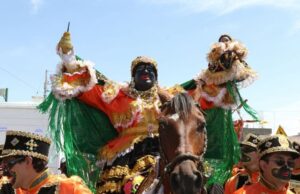
Pasillo, a significant Ecuadorian music and dance style, emerged during the South American independence wars and blends indigenous and modern Latin influences.
24. Ancient Ceramics
Ecuador is home to some of the oldest ceramics in the Americas, with artifacts dating back to 3000 to 2500 BCE.
25. Chimborazo’s Unique Elevation
Mount Chimborazo’s summit is the closest point on Earth to the sun due to the equatorial bulge, making Ecuador the closest country to space.
Recommended Reads
Interesting Facts About Music: Uncovering The Melodic World
Exploring Japan: A Land of Tradition, Innovation, and Natural Beauty
26. Diverse Geographic Regions
Ecuador comprises four distinct geographic regions: the coast (La Costa), the highlands (La Sierra), the Amazon (La Amazonía), and the Galápagos Islands (La Región Insular).
27. Inca Empire’s Influence
Ecuador was part of the Inca Empire from 1450 until the Spanish conquest in 1534.
28. Walking Palm Trees
The Sumaco Biosphere Reserve in Ecuador features walking palm trees that can ‘move’ up to 20 meters a year by sprouting new roots.
29. Ecuador’s First Female President
Rosalía Arteaga served as Ecuador’s first female president in 1997, albeit for only two days due to political maneuvering.
FAQ’s
What is Ecuador unique for?
- Galapagos Islands: Famous for their unique wildlife.
- Cultural Diversity: Each region has distinct cultures, especially in indigenous communities.
- Rights of Nature: Ecuador’s 2008 constitution grants legally enforceable rights to nature.
- Environmental Diversity: Home to diverse ecosystems like the Amazon Rainforest and Galapagos Islands
What is Ecuador’s nickname?
Ecuador is frequently called the “country of four worlds” because of its distinct ecoregions: the Andean highlands, the Amazon rainforest, the Pacific coast, and the Galápagos Islands. This title highlights the nation’s extraordinary environmental diversity and rich biodiversity, providing unique opportunities for visitors and researchers to explore and learn.
What is Ecuador’s national animal?
The national animal of Ecuador is the Andean Condor.
